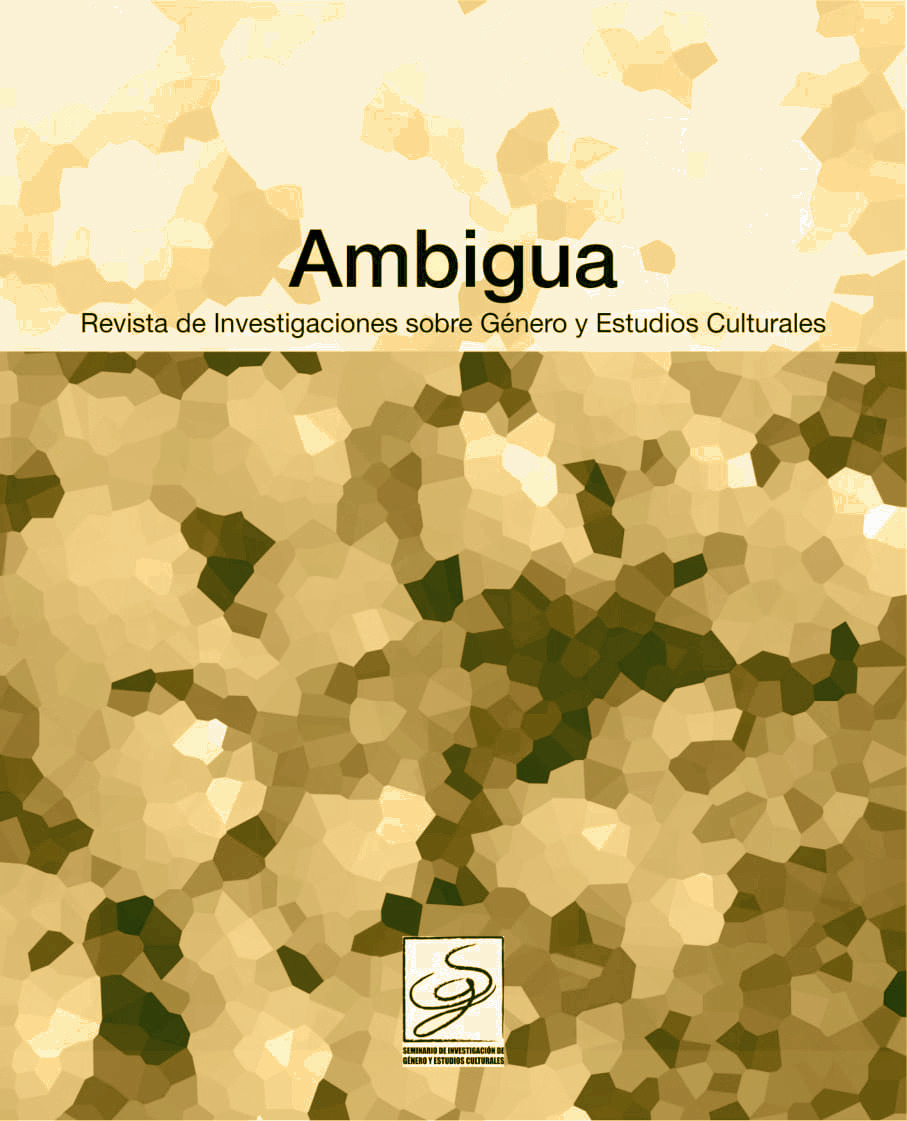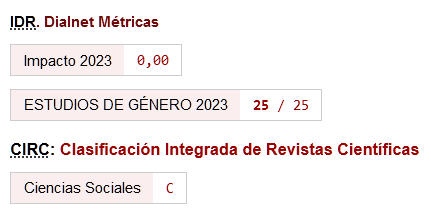“Papá está aquí”. Paternidades comprometidas en el cine japonés contemporáneo
DOI:
https://doi.org/10.46661/ambigua.7088Parole chiave:
Japón, masculinidad, paternidad, cine, ikumen, paternidad comprometidaAbstract
Los roles de género en la sociedad japonesa están fuertemente establecidos y, tradicionalmente, se espera que el padre salaryman trabaje fuera de casa mientras la madre queda al cuidado de los/as hijos/as en el hogar. Esta división de funciones, junto con la demandante cultura laboral del país, ha hecho que se naturalice un tipo de paternidad caracterizada por la ausencia y la desconexión emocional, pues la única responsabilidad de los padres parece ser proporcionar sustento económico. No obstante, en las últimas décadas han surgido nuevas conceptualizaciones de la paternidad, como la figura del ikumen, que reclaman una mayor participación de los hombres en las tareas del hogar y en la crianza de hijos/as. Este debate social ha propiciado la aparición de obras audiovisuales centradas en el cambio o en la transformación de las figuras paternas. Con el fin de reflexionar sobre el modo en que el cine japonés contemporáneo ha empezado a difundir un nuevo modelo de paternidad, en este artículo se discuten cuatro largometrajes recientes sobre relaciones paternofiliales. A través de un análisis del discurso fílmico centrado en los personajes, su caracterización y su evolución, se pone de manifiesto que este nuevo tipo de padre asume funciones tradicionalmente consideradas como femeninas (cocinar, cuidar a los hijos, comunicarse) y prioriza su familia sobre su trabajo. Las películas también muestran las dificultades que encuentran estos padres, especialmente la conciliación laboral y los prejuicios sociales basados en una concepción tradicional de la masculinidad.
Downloads
Riferimenti bibliografici
BALMAIN, Colette. Introduction to Japanese Horror Film. Edinburgh: Edinburgh University Press, 2008.
BIENEK, Tabea y SCHIMKOWSKY, Christoph. “Terms of the Ikumen Discourse”. Japanese Journal of Policy and Culture, 24 (2016): pp. 91-114.
BORDWELL, David. La narración en el cine de ficción. Barcelona: Paidós, 1996.
CASSETTI, Francesco y DI CHIO, Federico. Cómo analizar un film. Barcelona, Paidós, 1990.
CATHER, Kirsten. “Perverting Ozu: Suō Masayuki's Abnormal Family.” Journal of Japanese and Korean Cinema, 2(2) (2011): pp. 131-45. https://doi.org/10.1386/jjkc.2.2.131_1
CHOWDHURY, Romit. “Visualising Men's Caregiving Practices: Instances in Three Contemporary Bengali Films.” Culture, Society and Masculinities, 5(1) (2013): pp. 46-58.
DANCUS, Adriana Margareta. “A Father's Body, a Nation's Heart. Caregiving Fathers in Contemporary Norwegian Film.” NORA - Nordic Journal of Feminist and Gender Research, 19(2) (2011): pp. 71-86. http://dx.doi.org/10.1080/08038740.2011.568000
GEIST, Kathe. “The Role of Marriage in the Films of Yasujiro Ozu”. East-West Film Journal, 4 (1) (1989), pp. 44-52.
HAMAD, Hannah. “Hollywood Fatherhood: Paternal Postfeminism in Contemporary Popular Cinema”. En Postfeminism and Contemporary Hollywood Cinema, editado por Joel Gwynne y Nadine Muller, pp. 99-115. New York: Palgrave Macmilan, 2013.
HIDAKA, Tomoko. Salaryman Masculinity. The Continuity of and Change in the Hegemonic Masculinity in Japan. Leiden, Boston: Brill, 2010.
ILES, Timothy. “Families, Fathers, Films: Changing Images from Japanese Cinema”, Japanstudien-Familienangelegenheiten, 19 (2007): pp. 189-206.
JOO, Woojeong. “I was born middle class, but…: Ozu Yasujiro's shōshimin eiga in the early 1930s.” Journal of Japanese and Korean Cinema, 4(2) (2012): pp. 103-18.
MANDUJANO-SALAZAR, Yunuen Ysela. “Ikumen, los recientes discursos sobre la paternidad activa en Japón”. Nóesis: Revista de Ciencias Sociales y Humanidades, 25, (50) (2016): pp. 1-18.
MCDONALD, Keiko I. “Family, Education and Postmodern Society: Yoshimitsu Morita’s Family Game”. East-West Film Journal, 4 (1) (1989): pp. 53-68.
MIZUKOSHI, Kosuke; KOHLBACHER, Florian; y SCHIMKOWSKY, Cristoph. “Japan’s ikumen discourse: macro and micro perspectives on modern fatherhood”. Japan Forum, 28(2) (2015): pp. 1-21.
MONTAÑO MUÑOZ, José. “De la esperanza a la desesperación. Rebeldía juvenil y evolución de los géneros cinematográficos japoneses desde Ozu hasta Iwai”. Euskadiasia, 2014.
ROSENBAUM, Roman. “From the traditions of J-horror to the representation of kakusa shakai in Kurosawa's film Tokyo Sonata.” Contemporary Japan, 22(1-2) (2010): pp. 115–36.
SATO, Tadao. Currents in Japanese Cinema. Tokio: Kodansha International, 1982.
SCHIMKOWSKY, Christoph y KOHLBACHER, Florian. “Of ikumen and ikuboss: An Inquiry into Japan’s New Fathers as Consumers, Employees and Managers.” En Fathers in Work Organizations: Inequalities and Capabilities, Rationalities and Politics, editado por B. Liebig y M. Oechsle, pp. 149-68. Opladen, Berlin, Toronto: Barbara Budrich Publishers, 2017.
STANDISH, Isolde. A New History of Japanese Cinema: A Century of Narrative Film. New York: Continuum, 2005.
STURTZSREETHARAN, Cindi. “Resignifying the Japanese father: Mediatization, commodification, and dialect.” Language & Communication (2016): pp. 45-58. http://dx.doi.org/10.1016/j.langcom.2016.09.003
YAU, Shuk-ting Kinnia. “Bad Father and Good Mother: The Changing Image of Masculinity in Post-Bubble-Economy Japan.” En International Perspectives on Translation, Education and Innovation in Japanese and Korean Societies, editado por G, H. Hebert, pp. 243-253. Cham: Springer Nature, 2018.
##submission.downloads##
Pubblicato
Come citare
Fascicolo
Sezione
Licenza
Copyright (c) 2022 Francisco Javier López Rodríguez

Questo lavoro è fornito con la licenza Creative Commons Attribuzione - Non commerciale - Condividi allo stesso modo 4.0 Internazionale.
Las autorías que publican en esta revista están de acuerdo con los siguientes términos:
- Los autores conservan los derechos de autor y garantizan a la revista el derecho de ser la primera publicación del trabajo al igual que licenciado bajo Licencia Creative Commons Atribución-NoComercial-CompartirIgual 4.0 Internacional la publicación inicial en esta revista: Attribution-NonCommercial-ShareAlike 4.0 International (CC BY-NC-SA 4.0)
- Las autorías pueden establecer por separado acuerdos adicionales para la distribución no exclusiva de la versión de la obra publicada en la revista (por ejemplo, situarlo en un repositorio institucional o publicarlo en un libro), con un reconocimiento de su publicación inicial en esta revista.
- Se permite y se anima a las autorías a difundir sus trabajos electrónicamente (por ejemplo, en repositorios institucionales o en su propio sitio web) antes y durante el proceso de envío, ya que puede dar lugar a intercambios productivos, así como a una citación más temprana y mayor de los trabajos publicados (Véase The Effect of Open Access) (en inglés).
- Esta revista no cobra por publicar, es decir, no tiene APC's (the journal does not have article processing charges)
- Esta revista tampoco cobra ninguna tasa por el envío/presentación de trabajos (the journal does not have article submission charges)









